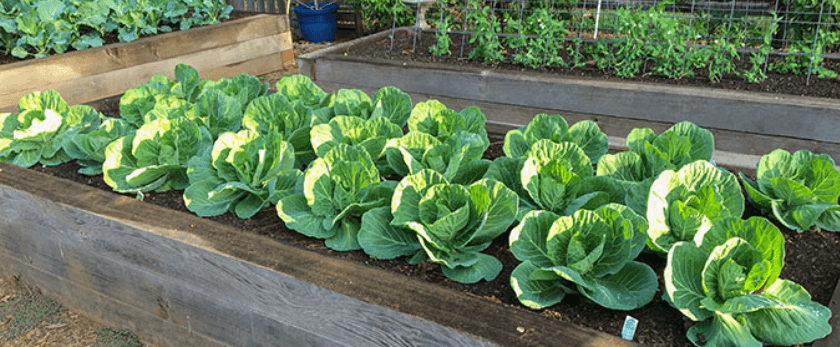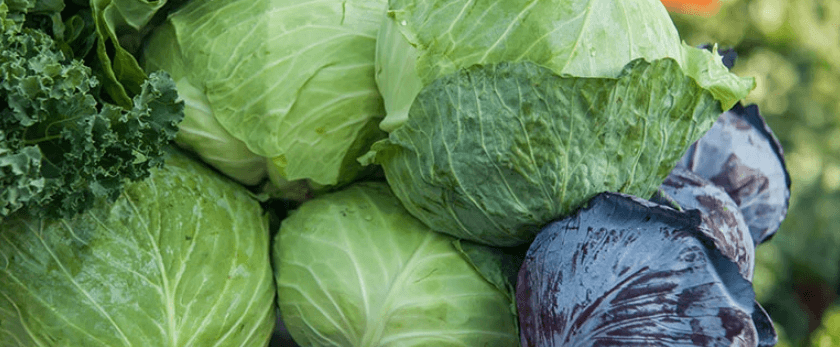Cabbage is a versatile and nutritious vegetable that can be grown in your own backyard. Not only is it easy to grow, but it also has numerous health benefits and can be used in a variety of dishes. In this article, we will discuss how to grow cabbage in an eco-friendly and sustainable way. By following these tips, you can not only enjoy fresh and delicious cabbage but also contribute to a greener and more sustainable planet.
Why Grow Cabbage?
Before we dive into the details of how to grow cabbage, let's first understand why it is a great addition to your garden. Cabbage is a member of the cruciferous vegetable family, which also includes broccoli, cauliflower, and kale. These vegetables are known for their high nutritional value and health benefits. Cabbage is a good source of vitamins C and K, as well as fiber, and has been linked to reducing the risk of heart disease and certain types of cancer.
Growing your own cabbage also means you have control over the growing process, ensuring that no harmful chemicals or pesticides are used. This not only benefits your health but also the environment. Additionally, growing your own food reduces your carbon footprint by eliminating the need for transportation and packaging.
How to Care for Cabbage
Watering
Cabbage plants require consistent moisture to grow properly. The soil should be kept evenly moist, but not waterlogged. Overwatering can lead to root rot and other diseases. On the other hand, underwatering can cause the cabbage heads to split. It is best to water your cabbage plants in the morning, as this allows the leaves to dry out during the day, reducing the risk of fungal diseases.
Light
Cabbage plants prefer full sun, which means they need at least 6 hours of direct sunlight per day. However, they can also tolerate partial shade. If you live in a hot climate, providing some shade during the hottest part of the day can help prevent the leaves from wilting.
Soil
Cabbage plants thrive in well-draining, fertile soil. Before planting, amend your soil with compost or well-rotted manure to provide the necessary nutrients. The ideal pH for cabbage is between 6.5 and 7.5. You can test your soil's pH using a home testing kit or by sending a sample to a local agricultural extension office.
Fertilizer
Cabbage plants are heavy feeders and require regular fertilization to grow well. Before planting, mix in a slow-release fertilizer into the soil. You can also use organic fertilizers such as compost or fish emulsion throughout the growing season. Be careful not to over-fertilize, as this can lead to excessive leaf growth and smaller heads.
Pruning
Pruning is not necessary for cabbage plants, but it can help improve air circulation and reduce the risk of diseases. Remove any damaged or yellowing leaves as they appear. You can also thin out the outer leaves to allow more sunlight to reach the inner leaves, promoting better growth.
What is the Best Time to Grow Cabbage?
Cabbage is a cool-season crop and can be grown in both spring and fall. The best time to plant cabbage depends on your location and climate. In general, cabbage can be planted 2-4 weeks before the last frost in the spring and 6-8 weeks before the first frost in the fall. You can also start cabbage seeds indoors and transplant them outside once the weather warms up.

Common Problems With Growing Cabbage
While cabbage is a relatively easy plant to grow, it can still face some common problems. Here are a few issues you may encounter and how to address them:
- Pests: Cabbage is susceptible to pests such as cabbage worms, aphids, and flea beetles. You can use natural methods such as handpicking, neem oil, or insecticidal soap to control these pests.
- Diseases: Cabbage can also be affected by diseases such as clubroot, black rot, and downy mildew. To prevent these diseases, practice crop rotation, keep the soil well-drained, and avoid overhead watering.
- Splitting: As mentioned earlier, overwatering can cause cabbage heads to split. To prevent this, water consistently and avoid sudden changes in moisture levels.
- Bolting: Bolting is when the cabbage plant produces a flower stalk prematurely. This can be caused by high temperatures or stress. To prevent bolting, plant cabbage in the cooler months and provide adequate moisture and nutrients.
Responsible Disposal Methods
Once you have harvested your cabbage, it is important to dispose of any leftover plant material responsibly. Composting is a great way to turn your cabbage scraps into nutrient-rich soil for your garden. You can also donate any excess cabbage to local food banks or community gardens.
If you have to dispose of your cabbage in the trash, make sure to do so in a responsible manner. Avoid using plastic bags and opt for biodegradable or compostable bags instead. This will help reduce the amount of plastic waste in landfills and promote a more sustainable future.
Conclusion
Growing cabbage is not only a rewarding experience but also a great way to contribute to a more sustainable planet. By following these tips, you can grow your own cabbage in an eco-friendly and responsible way. Remember to care for your plants by providing adequate water, light, and nutrients, and to dispose of any leftover plant material responsibly. Happy gardening!










